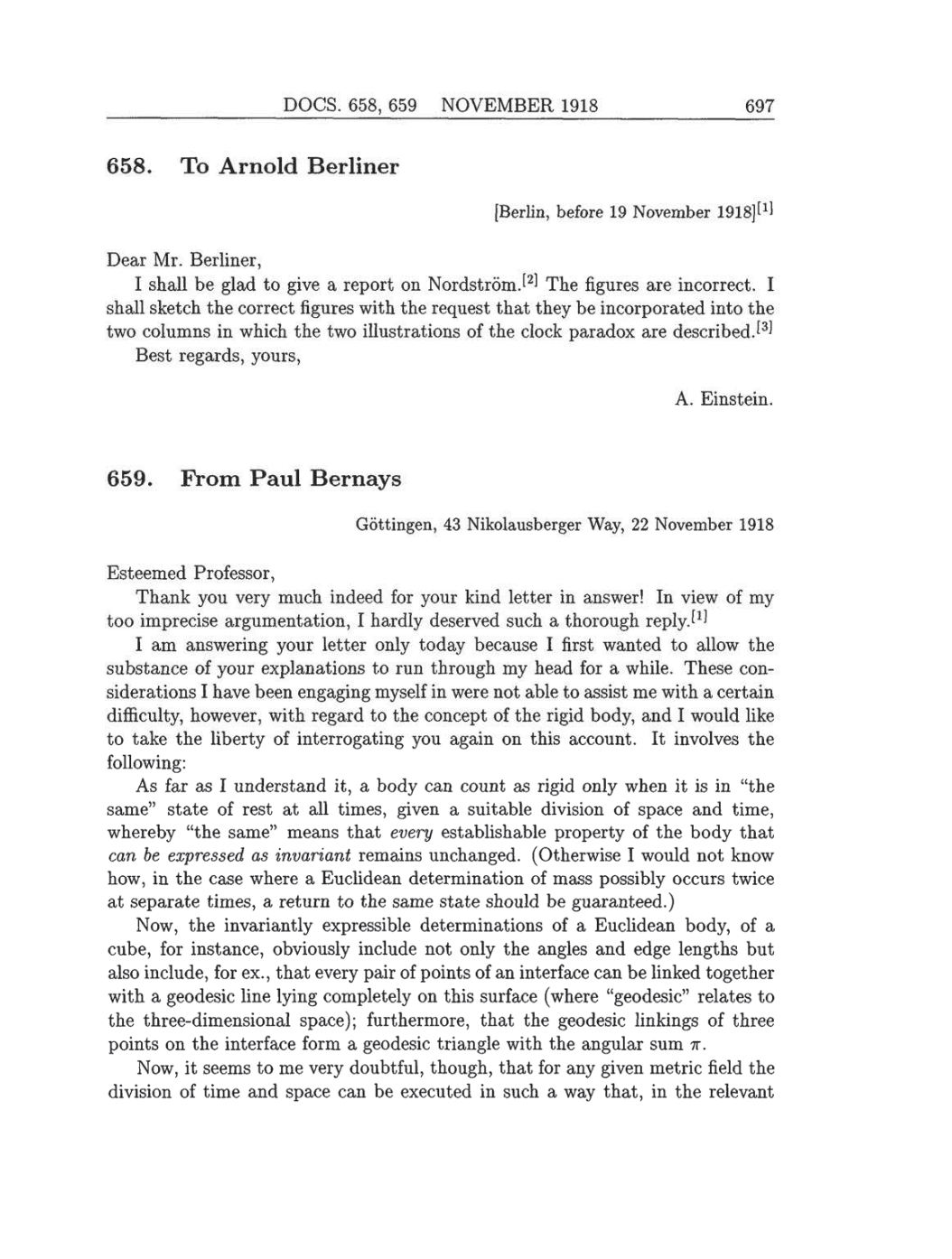DOCS.
658,
659
NOVEMBER
1918 697
658. To Arnold Berliner
[Berlin,
before
19
November
1918][1]
Dear Mr.
Berliner,
I
shall be
glad
to
give a
report
on
Nordstrom.[2] The
figures
are
incorrect.
I
shall sketch
the
correct
figures
with
the
request
that
they
be
incorporated
into
the
two columns in which
the
two
illustrations
of
the
clock
paradox are
described.[3]
Best
regards,
yours,
A.
Einstein.
659. From
Paul
Bernays
Göttingen,
43
Nikolausberger Way,
22
November
1918
Esteemed
Professor,
Thank
you very
much indeed for
your
kind
letter
in
answer!
In view of
my
too
imprecise
argumentation, I
hardly
deserved such
a
thorough
reply.[1]
I
am
answering your
letter
only
today
because
I
first wanted to allow
the
substance
of
your explanations
to
run
through
my
head for
a
while. These
con-
siderations
I
have been
engaging myself
in
were
not able to assist
me
with
a
certain
difficulty,
however,
with
regard
to
the
concept
of
the
rigid body,
and
I would
like
to
take the
liberty of
interrogating you
again on
this account.
It
involves
the
following:
As
far
as
I
understand
it,
a
body
can
count
as
rigid only
when
it
is
in “the
same” state of rest at
all
times,
given
a
suitable
division
of
space
and
time,
whereby
“the same”
means
that
every
establishable
property
of
the
body
that
can
be
expressed
as
invariant remains
unchanged. (Otherwise
I
would not know
how,
in
the
case
where
a
Euclidean
determination
of
mass
possibly
occurs
twice
at separate times,
a
return
to
the
same
state
should
be
guaranteed.)
Now,
the
invariantly expressible
determinations
of
a
Euclidean
body,
of
a
cube,
for
instance,
obviously
include not
only
the
angles
and
edge lengths
but
also
include,
for
ex.,
that
every
pair
of
points
of
an
interface
can
be
linked
together
with
a geodesic
line
lying completely
on
this surface
(where “geodesic”
relates
to
the
three-dimensional
space);
furthermore,
that
the
geodesic linkings
of
three
points
on
the
interface form
a
geodesic
triangle
with
the
angular
sum
7r.
Now,
it
seems
to
me
very doubtful, though,
that
for
any given
metric
field
the
division of
time
and
space
can
be executed in such
a way
that,
in
the
relevant
